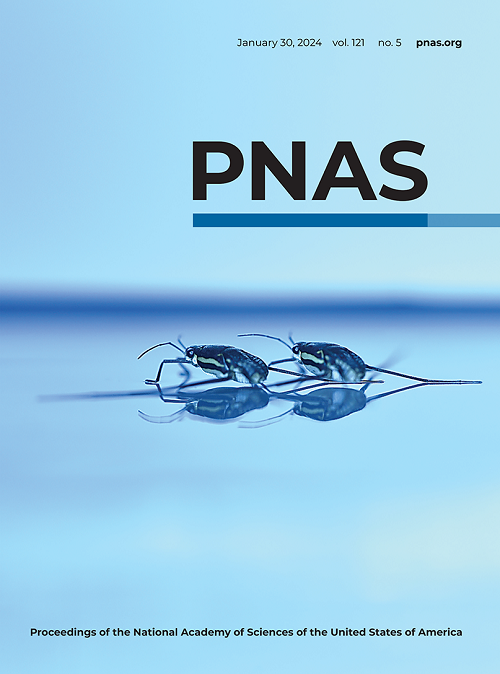Light controls gene functions through alternative splicing in fungi
IF 9.4
1区 综合性期刊
Q1 MULTIDISCIPLINARY SCIENCES
Proceedings of the National Academy of Sciences of the United States of America
Pub Date : 2025-06-27
DOI:10.1073/pnas.2500966122
引用次数: 0
Abstract
Light controls important biological processes in fungi by regulating transcriptional gene activation. Here, we found that beyond the regulation of mRNA transcript abundance, light regulates alternative splicing (AS) in the filamentous fungi光通过真菌的选择性剪接控制基因功能
光通过调节转录基因的激活来控制真菌中重要的生物过程。在这里,我们发现除了mRNA转录丰度的调控外,光还调控了丝状真菌细粒曲霉、贵州木霉和粗神经孢子菌的选择性剪接(AS)。蓝光调控的AS参与贵州稻麦角硫因的合成和分生,这一过程需要蓝光受体BLR1。蓝光激活MAPK HOG (Sak)通路,然后通过丝氨酸/苏氨酸激酶SRK1将信号传递给AS关键调控因子SRP1。SRK1和SRP1在光诱导条件下起重要作用。光激活的HOG途径导致SRK1蛋白水平及其磷酸化状态升高。磷酸化的SRK1从细胞质转移到细胞核,与SRP1相互作用,从而调节AS的效率。这项研究揭示了真菌环境感知和反应的另一个复杂水平,并首次描述了从环境信号到拼接机制的整个级联。
本文章由计算机程序翻译,如有差异,请以英文原文为准。
求助全文
约1分钟内获得全文
求助全文
来源期刊
CiteScore
19.00
自引率
0.90%
发文量
3575
审稿时长
2.5 months
期刊介绍:
The Proceedings of the National Academy of Sciences (PNAS), a peer-reviewed journal of the National Academy of Sciences (NAS), serves as an authoritative source for high-impact, original research across the biological, physical, and social sciences. With a global scope, the journal welcomes submissions from researchers worldwide, making it an inclusive platform for advancing scientific knowledge.

 求助内容:
求助内容: 应助结果提醒方式:
应助结果提醒方式:


